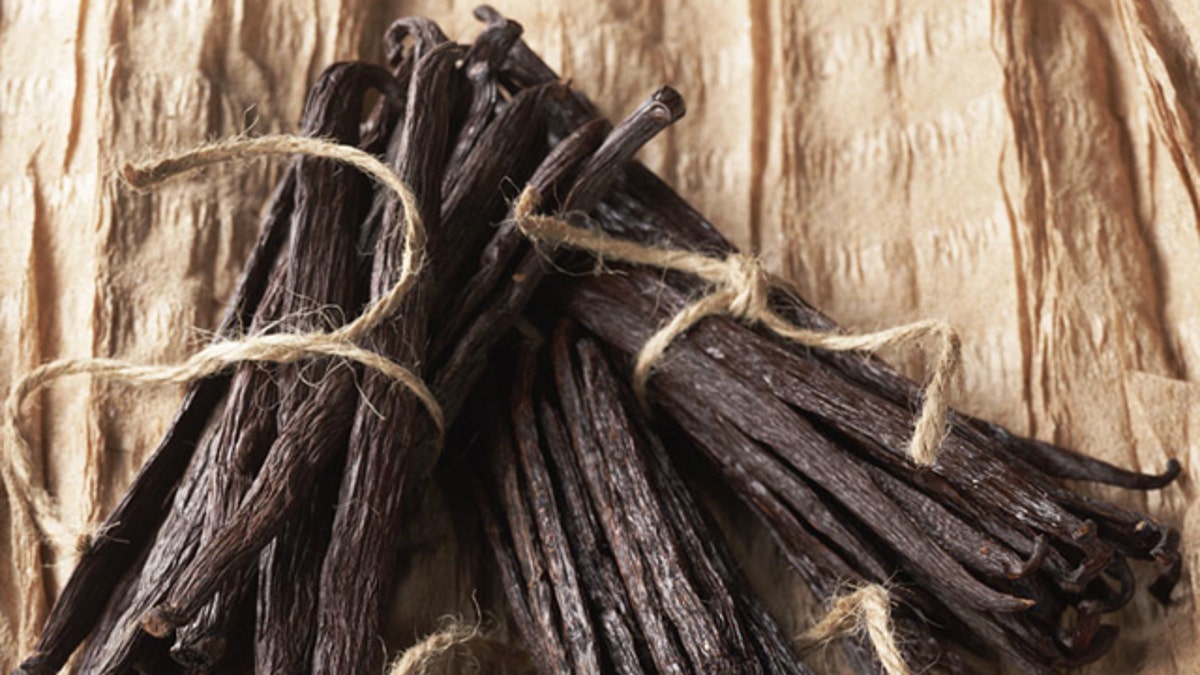
(Nielsen-Massey)
It’s synonymous with basic, bland and featureless, but leave it out of some recipes and that’s exactly how the food will taste. It’s an ingredient that you probably haven’t given much thought to, that almost no one objects to and that you know next to nothing about.
“People think of vanilla as a flavor. It’s actually a flavor enhancer. It’s why things don’t taste the same when you forget it,” says Beth Nielsen. It brings out and brightens the flavors of anything you add it to. Vanilla is Mother Nature’s very own MSG.
As Chief Culinary Officer of Nielsen-Massey Vanillas, Inc. of Waukegan, Illinois, Beth, along with brothers Craig and Matt, make what many consider to be world’s finest vanilla. They single-source all their products, - i.e., Madagascar vanilla has only Madagascar beans - and use the same suppliers their grandfather did. “The growers know our standards and save the best for us,” she says. Some producers make vanilla extract in three to six days using pressure and heat. Nielsen-Massey’s cold-extraction process takes between three and six weeks. “Vanilla’s 300 flavor components are extremely heat-sensitive. Heat saps those flavors while cold maintains that complexity,” she says.
Vanilla improves cookies, cakes and crème brûlée, but it also works its magic on tomato-based soups, barbecue sauces, margaritas, even roasted garlic, says Nielsen. “It’s the secret to my pasta sauce. It cuts the acid and enhances the tomato flavor.” She uses one-eighth to one-quarter teaspoon of vanilla per quart of sauce, homemade or store-bought. Sugar, which cuts the acidity in many recipes, also adds sweetness while vanilla doesn’t. “You don’t taste it. Stir it in and remove from heat. People would never guess it’s in there,” she says.
In 1907 Richard Massey and his partner Otis Kline founded a vanilla-based aroma company that sold scents to industrial cleaning companies. Chatfield Nielsen, Sr., Beth’s grandfather, joined in 1917. The company evolved from industrial aroma provider to the cleaning industry to vanilla flavoring provider to the food industry. Chatfield Sr. bought out Massey in the 1950s, and in the ‘60s added his name to the iconic little brown bottle with its ornate coat-of-arms label. “We think it’s a version of the Massey family crest but no one knows for sure,” says Nielsen. In the ‘80s, her father Chatfield Nielsen, Jr. launched their retail division. Since his passing in 1992, the third generation of Nielsens has brought the company into its second century.
Craig, CEO, oversees vanilla bean purchasing, corporate sales, new products and development. Matt, COO does operations, retail sales and IT. Beth, Chief Culinary Officer handles the food service and creative culinary side. Because they’re family-run then tend to overlap and to focus on every detail. “People sometimes freak out when we answer calls. They hear ‘Nielsen’ and say, ‘Don’t you have something more important to do?’ Frankly, we don’t. We’re all about quality ingredients and quality customer service,” she says.
For hundreds of years Mexico’s Totonaco Indians cultivated and produced vanilla, which is actually a member of the orchid family. After conquering the Totonaco, the Aztecs added vanilla to “Chocolatl,” a drink containing ground corn, cacao beans and honey. When Cortez conquered the Aztecs he brought the chocolate drink back to Europe where it became wildly popular. Vanilla was used only in chocolate until 1602 when Elizabeth I’s apothecary, Hugh Morton, suggested using it as a flavor in its own right.
Prescient smugglers brought Mexican vanilla vines to Reunion Island (formerly Bourbon Island) in 1793, just off the Madagascar coast. Madagascar Bourbon Vanilla - named for the French Royal house, not the whiskey - is regarded as the world’s best. Mexican and Madagascan vanillas come from the same varietal, but each has its own characteristics due to “terroir”—the cumulative effect of soil, land, air, climate, nutrients and growing traditions on agricultural products. Madagascar, Mexican and Tahitian vanillas are the world’s top three.
Madagascar, the most popular, is creamy, sweet and velvety, and is what most people imagine when they think of vanilla. It’s used in most baked goods (and Nielsen’s sauces.) Mexican is creamy and sweet with a spicy note, which best suits fall and holiday recipes with cinnamon, nutmeg, cloves, allspice. It’s great with sweet potatoes, hot chocolate, mole sauce and fresh salsas. Tahitian vanilla, which has very thick, plump beans, has a floral, fruity, cherry profile. It works best in sorbets or with exotic fruits with crème anglaise - a pouring custard made with vanilla seeds.
Nielsen-Massey has added powdered vanilla, vanilla-flavored sugar (great for coffee and caramelizing the tops of cookies, pastries and pies), and vanilla bean paste, a combination of extract and seeds. It’s a shortcut to a vanilla-speckled aesthetic. Rather than slicing length-wise through one side of a bean, scraping out the seeds with the flat-edge of a knife, and laboriously whisking the sticky, clumpy seeds so that they’re evenly distributed, just twist open a jar. Stir a teaspoon into custard, ice cream or whipped cream and you get those inviting little specks with zero effort.
The Nielsens intend to keep the company family-run and continue to educate people about vanilla, their Dad’s legacy. Their cookbook “A Century of Flavor,” commemorates the company’s 100th anniversary and offers sweet and savory family and chef-contributed recipes.
